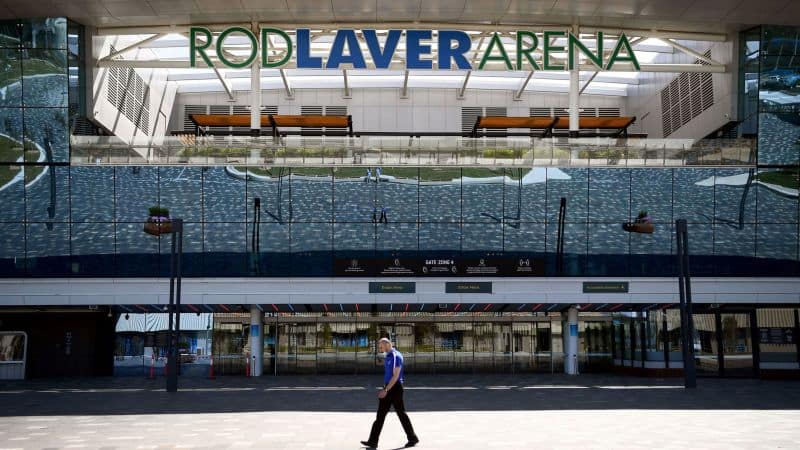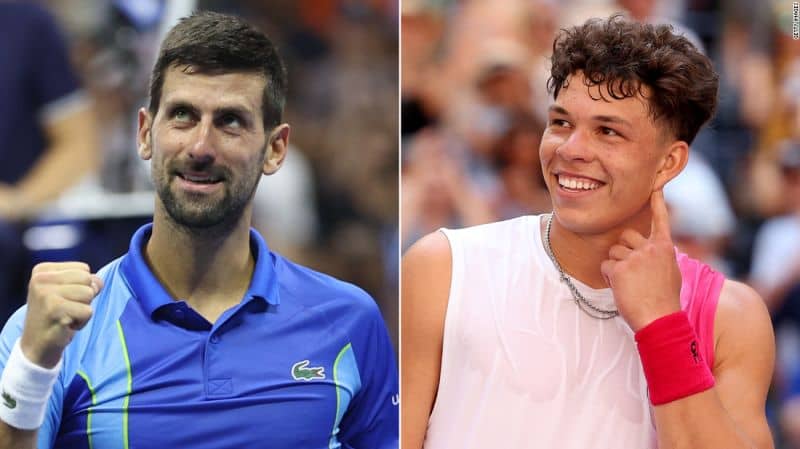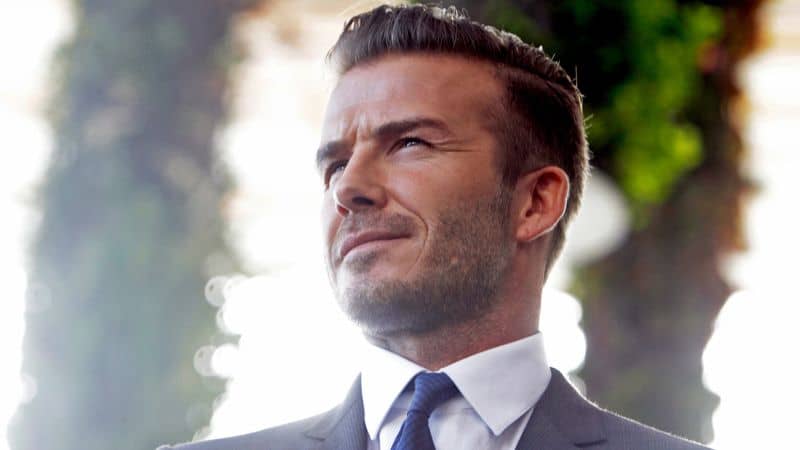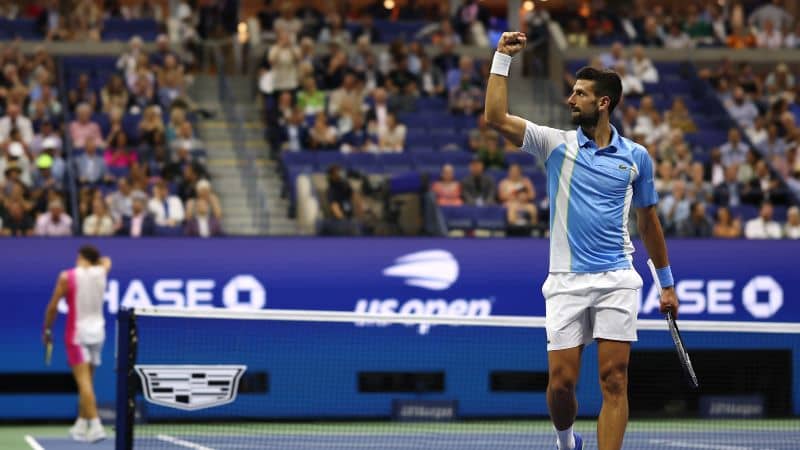CNN — Defending champion Rafael Nadal will face English youngster Jack Draper in the opening round of the Australian Open in a bid to retain his 2022 crown and extend his grand
CNN
—
Here’s a look at the Australian Open, one of four competitions that make up the “Grand Slam” in professional tennis. The other three are Wimbledon, the French Open and the US Open.
January 13-28, 2024 – The 112th Australian Open takes place.
January 16-29, 2023 – The 111th Australian Open takes place.
The tournament is played at Melbourne Park, in Melbourne, Australia.
The Australian Open is played on hard courts with a blue surface.
Jannik Sinner overcomes a two-set deficit to defeat Russia’s Daniil Medvedev in a five-set final and claims the men’s Australian Open title, becoming the first Italian man to win a grand slam since 1976.
Aryna Sabalenka successfully defends her Australian Open women’s title, defeating China’s Zheng Qinwen in the final.
Novak Djokovic defeated Stefanos Tsitsipas in straight sets to win a 10th Australian Open title and a record-equaling 22nd grand slam.
Belarusian-born Aryna Sabalenka defeated Elena Rybakina in three sets, becoming the first player competing under a neutral flag to secure a grand slam.
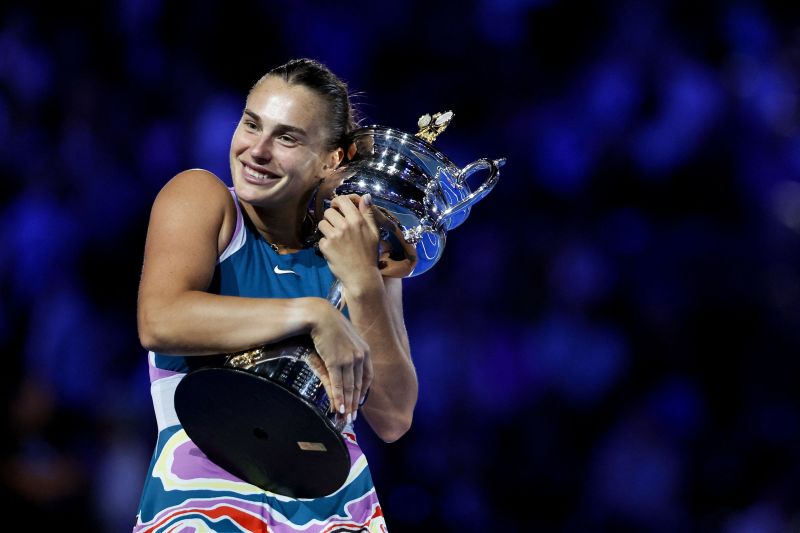
Total prize money for 2024 was a record high $86.5 million AUD, a 13% increase from $76.5 million AUD in 2023.
Youngest winners – men’s singles – Ken Rosewall (18); women’s singles – Martina Hingis (16)
Oldest winners – men’s singles – Rosewall (37); women’s singles – Thelma Long (35)
Most consecutive singles wins – men’s – Roy Emerson (five) 1963-1967; women’s – Margaret Court (seven) 1960-1966
Most singles titles overall – men’s – Djokovic (10); women’s – Margaret Court (11)
1905 – The Australasian Championships are played in Melbourne.
1927 – The name is changed to the Australian Championships.
1954 – Thelma Long wins the Women’s Singles Championship at 35 years and eight months, becoming the oldest female to do so.
1969 – The name is changed to the Australian Open.
1972 – Ken Rosewall wins the Men’s Singles Championship at age 37, becoming the oldest male player to win the Australian Open. Rosewall also holds the record for youngest champion, winning at age 18 in 1953.
2001 – Begins paying men and women equal prize money.
January 15-16, 2022 – World No. 1 and 2021 men’s singles champion Novak Djokovic is detained and deported from Australia over a visa and Covid-19 vaccination dispute, missing the tournament.
November 15, 2022 – Australia’s Immigration Ministry announces the repeal of Djokovic’s three-year ban from entering the country, paving the way for the nine-time singles champion to enter the 2023 Australian Open.
Don't Miss
CNN — Here’s a look at the life of former Brazilian President Dilma Rousseff. Birth date: December 14, 1947 Birth
CNN — Before a ball was even hit at this year’s US Open, many would have predicted three of the
CNN — Here’s a look at the life of retired professional soccer player David Beckham. Birth date: May 2, 1975
CNN
—
The Australian Open will add an extra day to its schedule next year in a bid to reduce pressure on players and fans following a series of punishing matches in recent years that ended well into the early hours.
The new 15-day schedule for January’s season-opening grand slam in Melbourne comes after growing calls to limit finish times across a notoriously crowded schedule marked by a number of matches going long into the night and taking a grueling toll on players.
At this year’s tournament, Andy Murray and Thanasi Kokkinakis famously ended a marathon battle at 4:05 a.m. in a second-round match that lasted nearly six hours.
Murray, a three-time grand slam champion and former world No. 1, was left fuming not just at the duration of the match but also because he was denied a chance to go to the toilet in the middle of the contest.
The Australian Open has a demanding schedule in the early rounds of the tournament; five matches are regularly played each day on the show courts – three during the day session and two at night.
“We’ve listened to feedback from the players and fans and are excited to deliver a solution to minimise late finishes while continuing to provide a fair and equitable schedule on the stadium courts,” Australian Open tournament director Craig Tiley said in a statement.
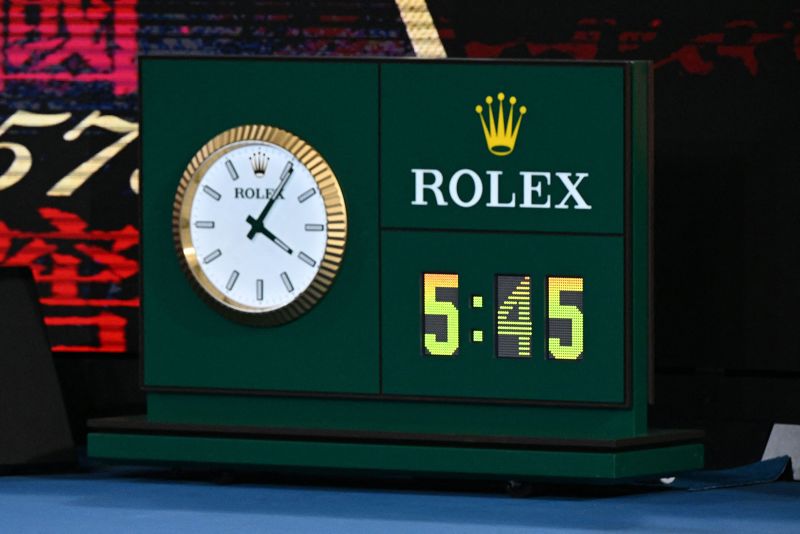
With the new changes, the tournament’s first round will last for three days, instead of the previous two, easing the squeeze in the busy opening stages.
The Australian Open’s new dates for 2024 will be January 14-28 and the Sunday start will increase the number of sessions across three arenas from 47 to 52. But organizers did not mention whether there would be a cutoff time for night matches.
The battle between Murray and Kokkinakis was only the second-latest finish in the tournament’s history.
In 2008, Lleyton Hewitt beat Marcos Baghdatis in five sets at 4:33 a.m. after Roger Federer had taken four and a half hours to defeat Janko Tipsarevic earlier in the day.
Those late finishes are a bonus for international viewers in Europe and North America, who are able to enjoy the drama and tension of a five-set match in their daytime hours. But they are less fun for the players and those watching in the stands.
The lack of a time cap in tennis means matches last as long as it takes players to win.
Three out of the four grand slams – the Australian Open, the French Open and the US Open – currently schedule night sessions, while Wimbledon ends evening sessions at 11 p.m. with unfinished matches resuming the following day.
The Wimbledon curfew, implemented in 2009, is said to be intended to get spectators home safely from the venue but the cutoff has at times left fans hanging on a cliff during the most intense matches.
The longest professional match occurred at Wimbledon in 2010 when US player John Isner eventually defeated French opponent Nicolas Mahut after an epic 11-hour contest played over three days.
Don't Miss
CNN — Axl Rose is ending a 30-year Guns N’ Roses tradition. The band’s frontman recently posted a note saying
CNN — Before a ball was even hit at this year’s US Open, many would have predicted three of the
CNN — Novak Djokovic cruised through to the US Open final after a dominant 6-3 6-2 7-6 (7-4) win against
CNN
—
Defending champion Rafael Nadal will face English youngster Jack Draper in the opening round of the Australian Open in a bid to retain his 2022 crown and extend his grand slam tally.
World No. 1 Carlos Alcaraz may be missing the tournament through injury, but with the return of Novak Djokovic to the competition, Nadal will be hard pushed to defend his title.
Thursday’s draw was not kind to the 22-time major winner: if he defeats the world No. 40 Draper, he potentially faces current Next Gen ATP Finals champion Brandon Nakashima.
Potentially awaiting the Spaniard later would be a quarterfinal against Daniil Medvedev, who was Nadal’s opponent in last year’s epic five-set final. Medvedev will be looking to make it a third consecutive finals appearance after losing to Djokovic in 2021 and to Nadal in 2022.
A rematch of the 2021 final is on the cards, with Djokovic in the opposite half from Nadal and Medvedev. The nine-time Australian Open champion faces another Spaniard, Roberto Carballes Baena, in the opening round and is on track to face home favorite Nick Kyrgios in the last eight.
The tournament comes 12 months after Djokovic was deported from Australia on the eve of the 2022 edition after former immigration minister Alex Hawke found the tennis star posed a risk to public health and order because, as a celebrity sportsman who had previously expressed opposition to people being compelled to get the Covid-19 vaccine, he could be seen as an “icon” for anti-vaxxers.
The minister’s decision to deport the former world No. 1 meant he was initially banned from reentry for three years.
Nineteenth-seeded Kyrgios is part of a thrilling section of the draw which includes Holger Rune, Dan Evans and Andrey Rublev.
Russian Rublev comes into the Australian Open as the fifth seed, but on Wednesday suffered a shock defeat to world No. 110 Thanasi Kokkinakis in the Adelaide 2. Rublev faces a blockbuster opening round match against former world No. 3 and 2020 Australian Open finalist Dominic Thiem.
Andy Murray features in the other pick of the round as he faces 13th-seeded Matteo Berrettini. The Italian beat the three-time grand slam winner in four sets at the 2022 US Open and has beaten the Scotsman three out of their four ATP meetings.
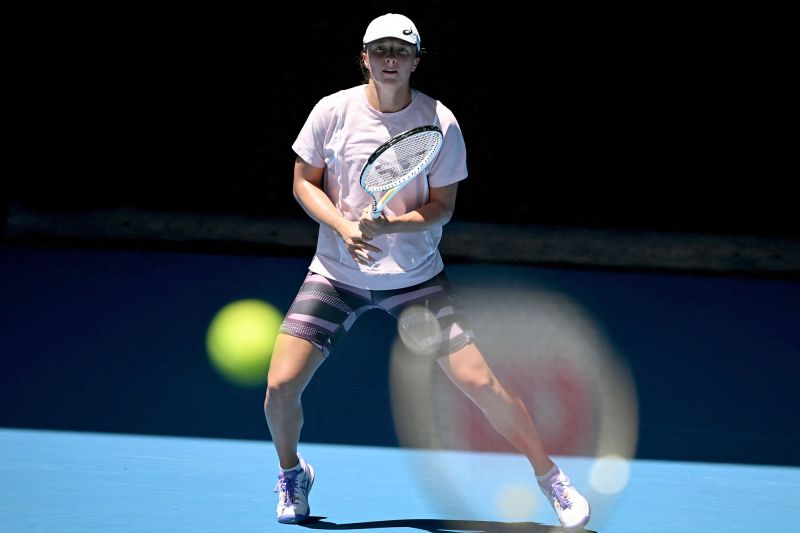
Following reigning champion Ashleigh Barty’s retirement from tennis last year, Iga Światek has dominated the sport and comes into the tournament as the top seed. The Pole opens against German Jule Niemeier but faces a tasty potential quarterfinal clash with American hot prospect Coco Gauff.
The 18-year-old superstar comes into the tournament in fine form, having won the ASB Classic without dropping a set and is looking to build on her excellent 2022 which saw her reach the Roland Garros final where she was beaten by Światek.
Ahead of any quarterfinal clash with the favorite though, Gauff faces a second round match against 2021 US Open champion Emma Raducanu who is in a race against time to recover from an ankle injury.
In the other half of the draw, second seed Ons Jabeur starts her 2023 trying to go one better than last year and win a grand slam. The Tunisian made both the Wimbledon and US Open finals but fell at the final hurdle in her pursuit to become the first Arab and North African woman to win a grand slam.
After missing the 2022 Open, Jabeur opens her 2023 account against Tamara Zidanšek and could face Aryna Sabalenka who is coming off the back of winning at Adelaide 1, her 11th career title and first in 19 months.
Elsewhere, American Jessica Pegula has been drawn in the same part of the draw as Maria Sakkari. Pegula recently led Team USA to victory in the inaugural United Cup, which featured a brilliant straight-set win over Światek. Having reached back-to-back quarterfinals in Melbourne and at the top of her game, she will be looking to set up a thrilling semifinal with her United Cup opponent.
Don't Miss
CNN — Before a ball was even hit at this year’s US Open, many would have predicted three of the
CNN — Novak Djokovic cruised through to the US Open final after a dominant 6-3 6-2 7-6 (7-4) win against
CNN — Here’s a look at the Australian Open, one of four competitions that make up the “Grand Slam” in



